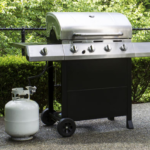Fire protection systems are essential for ensuring the safety of lives and property in residential, commercial, and industrial spaces. Fires can cause catastrophic damage, leading to financial losses, injuries, and even loss of life. Therefore, having an efficient fire protection system in place is crucial. This comprehensive guide will explore the different types of fire protection systems, their components, benefits, and best practices for maintaining them.
What is a Fire Protection System?
A fire protection system is a set of tools and measures designed to detect, control, and extinguish fires before they cause significant damage. These systems help minimize the risks associated with fires by providing early warnings and effective suppression techniques. Fire protection systems can be broadly classified into two categories:
- Passive Fire Protection Systems
- Active Fire Protection Systems
Each type plays a crucial role in ensuring safety and minimizing fire-related hazards.
Types of Fire Protection Systems
1. Passive Fire Protection Systems
Passive fire protection (PFP) systems are built into the structure of a building to prevent the spread of fire and smoke. These systems do not require any action once installed, making them a reliable first line of defense. Key components of passive fire protection include:
- Fire-Resistant Walls and Doors: Constructed using fire-resistant materials to contain the spread of flames and smoke.
- Fireproof Coatings: Applied to structural elements to delay fire damage.
- Fire Dampers: Installed in duct systems to block fire and smoke passage.
- Compartmentalization: Dividing buildings into sections to prevent fire from spreading rapidly.
2. Active Fire Protection Systems
Active fire protection (AFP) systems require manual or automatic activation to detect and suppress fires. These systems include:
- Fire Alarm Systems: Designed to detect smoke, heat, or flames and alert occupants.
- Fire Sprinkler Systems: Automatically release water when a fire is detected.
- Fire Extinguishers: Portable devices used to control small fires.
- Smoke Control Systems: Remove smoke from buildings to aid evacuation.
- Emergency Lighting and Exit Signs: Help guide people to safety during a fire.
Key Components of Fire Protection Systems
Each fire protection system consists of several critical components that work together to ensure fire safety. These include:
1. Fire Detection Systems
Fire detection systems are designed to sense smoke, heat, or flames and trigger an alarm. These systems include:
- Smoke Detectors: Detect smoke particles in the air and activate an alarm.
- Heat Detectors: Sense high temperatures and alert occupants.
- Flame Detectors: Identify open flames and initiate response mechanisms.
2. Fire Suppression Systems
Fire suppression systems work to extinguish fires before they spread. Common types include:
- Water-Based Systems: Fire sprinklers and hydrants that use water to douse flames.
- Gas-Based Systems: Use inert gases like CO2 or FM-200 to suppress fires in sensitive areas.
- Foam-Based Systems: Discharge foam to smother fires and prevent re-ignition.
3. Fire Alarm Systems
Fire alarm systems consist of:
- Manual Call Points: Allow individuals to trigger alarms manually.
- Automatic Sensors: Detect fire hazards and activate alarms automatically.
- Control Panels: Central units that monitor and manage the fire alarm system.
4. Emergency Exit and Lighting Systems
In case of fire, visibility can be compromised due to smoke. Emergency exit and lighting systems ensure that people can safely evacuate. These include:
- Exit Signs: Clearly marked signs directing occupants to exits.
- Emergency Lighting: Battery-powered lights that activate during power failures.
Benefits of Fire Protection Systems
Implementing fire protection systems offers numerous advantages, including:
- Early Detection and Warning: Fire detection systems help identify fires in their early stages, preventing extensive damage.
- Minimized Property Damage: Fire suppression systems control flames before they spread, reducing structural losses.
- Enhanced Safety for Occupants: Alarm systems and emergency exits ensure safe evacuation.
- Legal Compliance: Many building codes and regulations require the installation of fire protection systems.
- Reduced Insurance Costs: Businesses with proper fire protection systems may qualify for lower insurance premiums.
Best Practices for Maintaining Fire Protection Systems
To ensure fire protection systems function optimally, regular maintenance and inspections are necessary. Here are some best practices:
1. Conduct Regular Inspections
- Check fire alarms, smoke detectors, and sprinklers monthly.
- Ensure emergency lighting is functional.
2. Test and Service Equipment
- Perform fire alarm tests to confirm proper functioning.
- Refill and replace fire extinguishers as needed.
- Service fire suppression systems annually.
3. Train Occupants and Employees
- Conduct fire drills to prepare for emergencies.
- Educate individuals on using fire extinguishers and evacuation routes.
4. Comply with Local Fire Safety Regulations
- Adhere to national and local fire safety codes.
- Obtain necessary fire safety certifications.
Conclusion
Understanding fire protection system is essential for safeguarding lives and property. Whether passive or active, these systems work together to detect, control, and suppress fires. Regular maintenance and compliance with fire safety regulations ensure their effectiveness. By investing in reliable fire protection measures, individuals and businesses can significantly reduce the risks associated with fire hazards.



